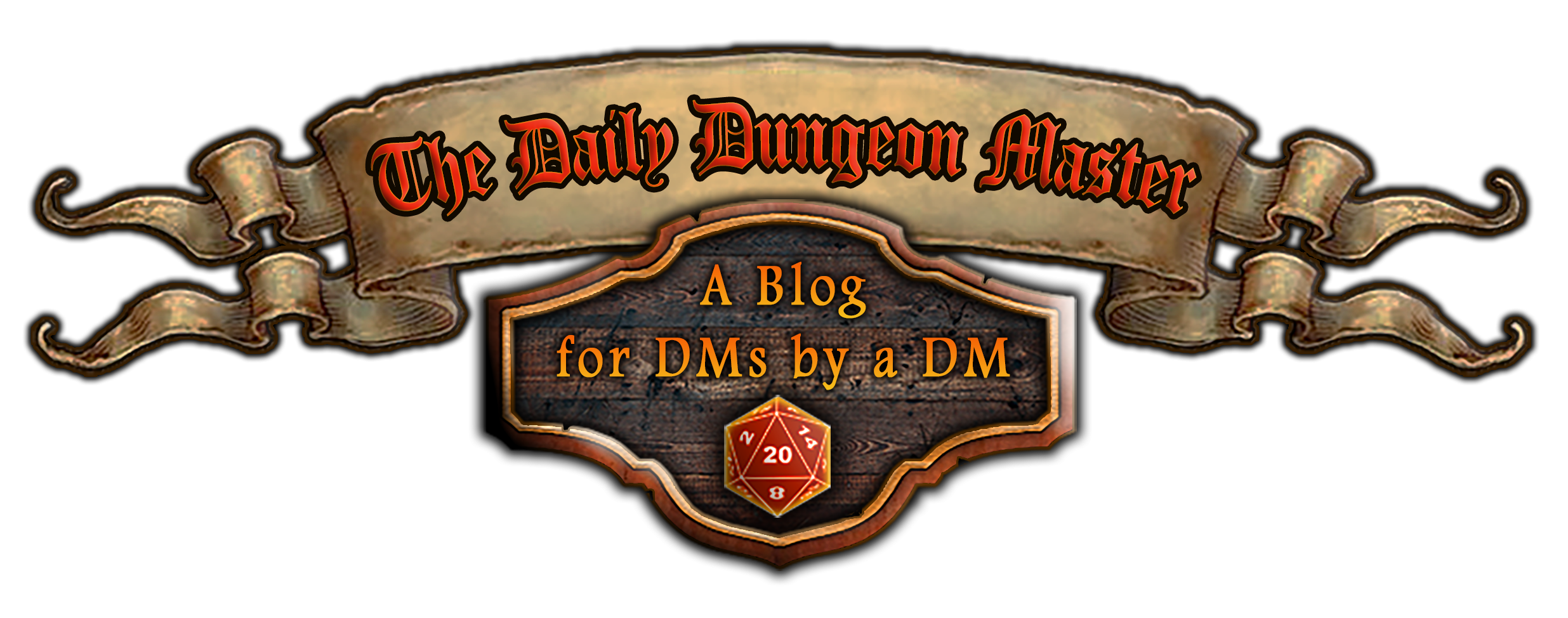This week’s How to DM, we are looking at building encounters.
Last week, we talked about Adventure Planning, where we decided what sorts of encounters the party would face while getting to their goal. I break encounters up into four categories:
- Monsters
- Role-playing/NPCs
- Puzzle-solving
- Traps
Sure, there are other kinds, but in my opinion, all of these are subsets of the above four.
Let’s talk about them!
Monsters
These are pretty easy to define.

Monsters are those pesky things that are usually hiding, guarding, or hoarding treasure. They come in all shapes and sizes, but more importantly, they come in differing ecologies. As such, take a look at your adventure encounters. Do you want a goblin there? Why is it there? Is it in a city, and if so why? The monster descriptions tell you the sort of place or environment that the particular critter is supposed to be found in. It doesn’t really make sense for a fire elemental to be found on the Elemental Plane of Water, for example.
That said, I ask myself the following questions when placing a monster somewhere:
- Why is it there?
- What does it want, if anything?
- What is it doing when the party encounters it?
- Does the party have to kill or defeat it in order to complete the encounter?
- Can the party bypass the monster with words or actions?
- How did it get there?
- What is on it, be it treasure, weapons, or other (keys or other such plot-important items)?
Keep in mind that if you can justify why something is where it is, it doesn’t matter that it doesn’t technically belong. Maybe that’s a mystery the party of adventurers is meant to discover, maybe not. Sometimes, the strangest placement of a weird critter can be a memorable encounter (“Remember that imp we found in the Seven Heavens? Weird, right?”).
Puzzles
These are always fun for the party…sometimes.

Of course, I kid, but sometimes…not really. Remember when we looked at types of adventures? Well, I forgot a crucial point: do the sorts of adventures that your players enjoy. If they enjoy combat, roll some good combat encounters. If they enjoy puzzles, toss them in. If they DO NOT ENJOY PUZZLES don’t do many, if any at all. Trust me on this.
Personally, I love the puzzles that involve a player miming themselves through. No joke, I got a player to do the Cha-cha Slide which was written down one step at a time, in order for them to get across a floor to the other side where a lever would disable the rest of the floor. It was awesome and that whole dungeon had everyone laughing and enjoying themselves. The best part? The party was okay with puzzles, so they could get into it. A good time was had by all.
That said, be careful with puzzles…

I’m not trying to insult the intelligence of players here, so don’t get me wrong. The issue is that, if they’ve been running combat encounter after combat encounter, sometimes a player is not in the headspace to be able to solve a riddle or work through a puzzle. Be careful on how much thinking you really want the party to go through.
Traps
This is also pretty self-explanatory. Of note however, regardless of how cool your trap may be, let me offer a bit of advice: stay away of instant kill traps. I mean, if there are clear warnings that “Death Ahead: Bridge over lava is out!” are ignored, please, by all means, let the player that walks through the door die. But no inescapable pits of acid, no death drops into lava, etc…
That said, if you are running the sort of “meat-grinder” that The Tomb of Horrors entails, make sure that the party is fully aware that the death of their characters is a VERY real possibility. This keeps the party in the mindset that behind every door is the possibility of death.
Also, traps, with few exceptions, should be able to be disabled. Don’t take the job from the rogue and make sure that the rogue gets a chance to do one of his many jobs.

Role-playing/NPCs
This is the bread and butter of D&D, and partly why it is a social game. This is where the players get to talk as their characters, interacting with one another as well as the wonderfully deep and structured (::snort:: – who am I joking?) Non-player characters.
This is where the players get to have their characters get to explore their backgrounds (“Wait…what do you mean you were a sailor? We’ve been on this sailing ship for ages and you’ve said NOTHING!”), get to resolve inter-party conflicts, and much, much more.
A word of note: it really helps to incorporate your players’ backstories into the campaign to encourage role-playing. The characters’ backstories can provide a veritable HOST of adventure ideas.

I hope you found this helpful. If you think there’s something I missed, tell me in the comments!
Discover more from The Daily Dungeon Master Blog
Subscribe to get the latest posts to your email.

